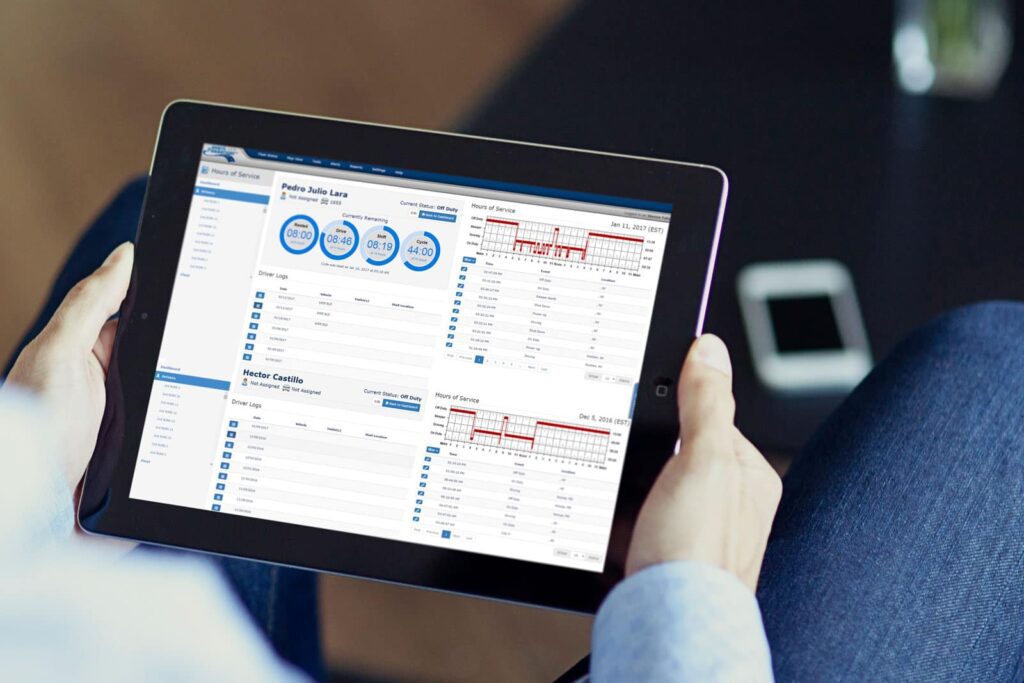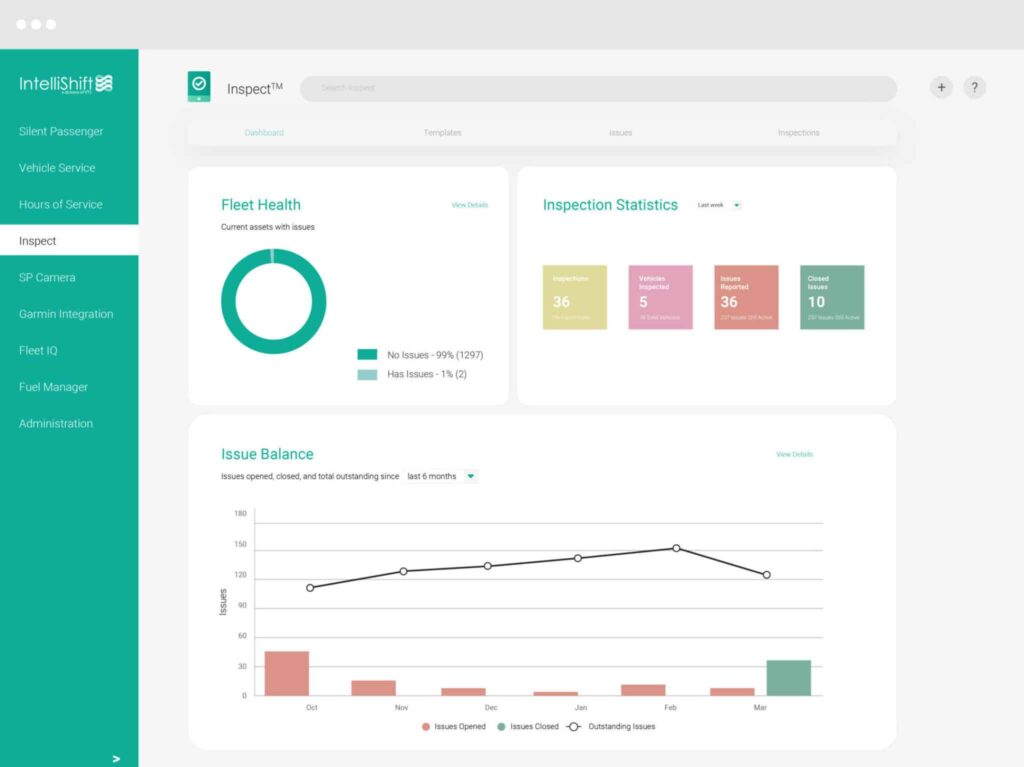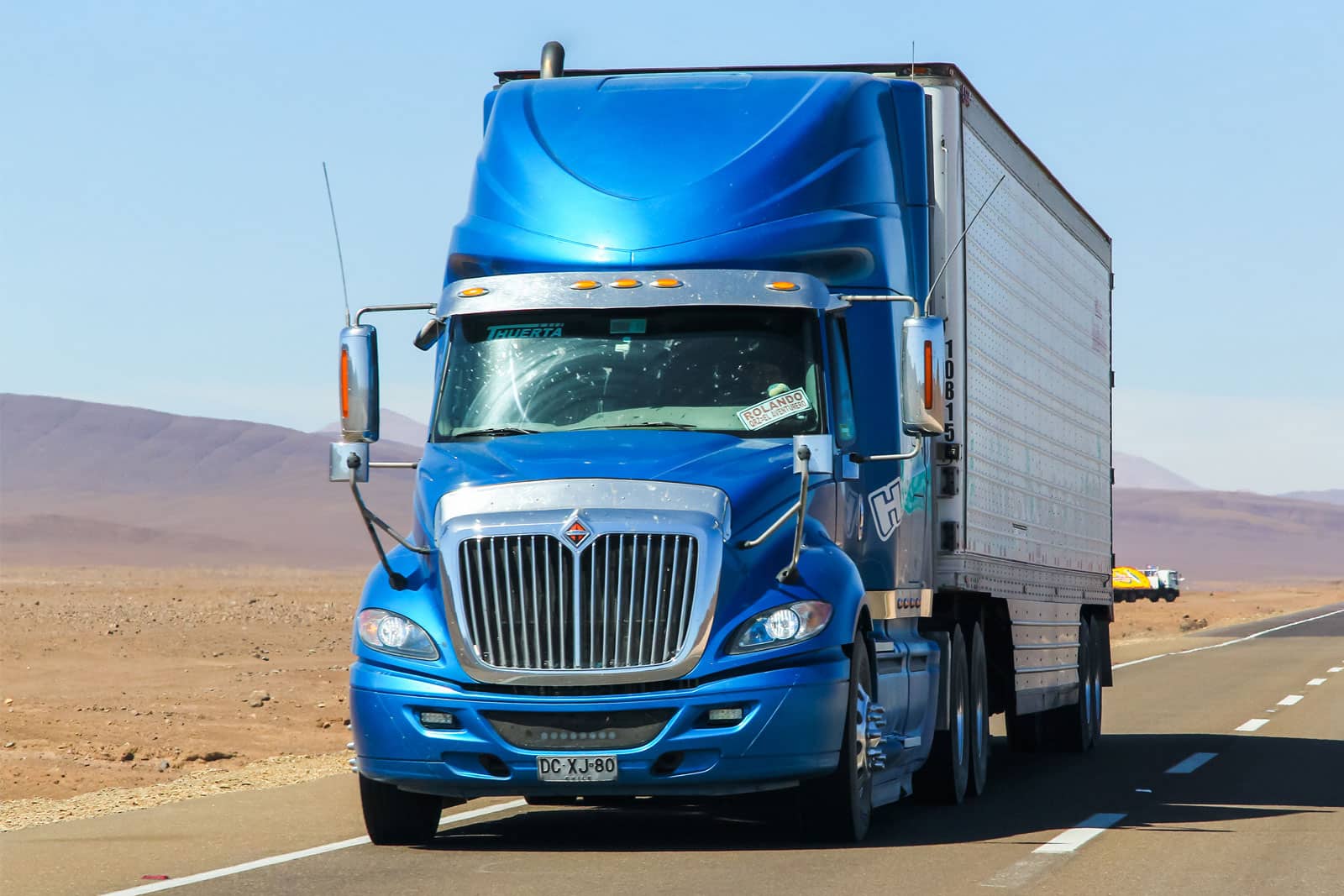Maintaining a safe fleet requires staying compliant with DOT and FMCSA requirements. These regulations strive to make the road a safer place for both drivers and passengers.
To avoid costly fines and safety hazards, it’s essential to learn how to abide by DOT compliance requirements and improve fleet safety.
We’ve put together everything you need to know about DOT compliance and tips to sustain regulation requirements.
What Is DOT Compliance?
The Department of Transportation (DOT) is the government agency responsible for regulating all interstate transportation and mobility in the United States. To do this, the DOT creates a wide set of rules and regulations with which all commercial vehicle owners must comply. The DOT’s posted mission statement reads:
To ensure America has the safest, most efficient and modern transportation system in the world, which boosts our economic productivity and global competitiveness and enhances the quality of life in communities both rural and urban.
While the DOT creates the rules and regulations, the Federal Motor Carrier Safety Administration (FMCSA) is the federal agency that enforces them. In order for a commercial fleets to stay DOT compliant, they must abide by the many regulations, provide ongoing proof and participate in regular audits conducted by the federal agencies.
The purpose of DOT compliance regulations is to enforce safety measures to reduce driving incidents.
Common DOT safety compliance requirements include:
- Refraining from drugs and alcohol.
- Following inspection requirements.
- Following FMCSA guidelines.
- Adhering to hazardous material regulations.
- Meeting general safety requirements.
Who Needs to Comply With DOT Regulations?
DOT regulations apply to any Commercial Motor Vehicle (CMV) operator in the U.S. A CMV is defined by several criteria including any driver who:
- Transports hazardous materials.
- Has a gross vehicle weight of 4,536 kg (10,001 pounds) or more.
- Transports 16 or more passengers (passenger-carrying vehicle), including the driver, without compensation.
- Transports 9 or more passengers (passenger-carrying vehicle), including the driver, for compensation.
If you meet any of these criteria, you are required to comply with DOT regulations or face fines. Some states also require you to register for a USDOT number.
What Are DOT Compliance Requirements?
DOT requirements include a variety of safety compliance initiatives such as meeting driver qualifications, following material regulations, and keeping up on inspections and fleet maintenance.
Meet the following guidelines to ensure your fleet stays DOT compliant:
Hours of Service (HOS)
HOS regulations help keep drivers alert, awake, and responsive. Requirements include taking a 30-minute break every eight hours, avoiding adverse driving conditions, and putting a cap on driving limits.
New regulations under the electronic logging device (ELD) mandate require the use of ELDs to track HOS. An ELD must connect to the engine to record motion status, miles driven, and engine hours among other specifications. ELDs must be approved by the FMCSA.

Vehicle Inspections & Maintenance
The DOT requires drivers to complete Driver Vehicle Inspection Reports (DVIRs) to before and after every trip. Pre and post-trip inspections generally include a close examination of the inside and outside of the vehicle, checking for damage or malfunctions that could lead to incidents on the road.
Not only is it important to stay on top of maintenance inspections for DOT compliance reasons, but doing so can extend vehicle life by preventing wear and tear. Your fleet maintenance strategy should include repairing brakes, lights, tires, and more.
With the help of a digital inspection solution, you can compile reporting by digitizing paperwork, saving you both time and effort.
Driver Qualifications
Before hiring a new driver, implement a pre-employment background check to obtain driving records. This allows you to assess their safety records, drug history, and overall driver fitness.
the FMCSA requires that employers conduct a background check that includes:
- Obtaining motor vehicle records for the past three years.
- Investigating safety history which includes accident records.
- Verifying substance abuse records including alcohol or drug violations.
- Conducting a pre-employment drug test.
These records can help assess driver fitness, ensuring your fleet drivers follow safety protocols.
Drug and Alcohol Screening
Beyond the initial pre-employment drug screening, the DOT requires random tests throughout employment. Drug and alcohol screening ensures drivers are alert and responsive on the road.
Screen drivers for marijuana, cocaine, amphetamines, opioids, and PCP. Perform screenings randomly, when there is reasonable suspicion, and as a follow-up to incidents if needed.
Hazardous Materials Regulations
Hazardous materials regulations provide safety precautions when carrying waste and pollutants. Drivers must receive proper training on how to handle hazardous materials and stay compliant with DOT regulations. Failure to classify, describe, and package materials correctly could result in serious penalties.
Cargo Securement
Cargo securement includes regulations around tie-downs and front-end structures. This includes latching tailgates, doors, and spare tires as well as fastening wedges to prevent movement while on the road.
Securement of cargo also includes specifications around obscuring front and side views.
Record Keeping
You must maintain and properly file driver records to stay DOT compliant. While there are numerous documents you are required to keep for annual reporting or in the event of an audit, records include:
- Proof of insurance
- Vehicle inspections and maintenance
- Driver qualifications
- Drug screening
- Hours of Service
- Incidents
- Driver training
With so much paperwork to keep track of, digitizing records makes it easy to provide proof in real time. Digital inspection solutions can improve the speed and accuracy of DVIRs and compliance reporting, maximizing the efficiency and safety of your entire fleet.
Licenses and Permits
DOT compliance regulations require you to register for relevant licenses and permits. While these vary depending on your state, common requirements include registering for a USDOT number and MC number.
Additional licenses and permits include commercial driver’s licenses (CDLs), motor carrier authority numbers, unified carrier registrations, and standard carrier codes.
Tips to Avoid DOT Violations
Along with following DOT compliance regulations, there are additional measures you can take to avoid violations and stay compliant.
Here are a few tips to follow when looking to optimize DOT compliance.
1. Maintain Compliance Visibility
Maintain awareness of your fleet’s compliance by monitoring issues around HOS violations and DVIR inspections. An ELD solution offers visibility to track and record mandated requirements. Digital inspection solutions compile inspection report data centrally so that you can visualize fleet compliance in easy-to-use dashboards.
Along with greater visibility, a digitization allows you to receive real-time alerts on failed inspections and violations, keeping you a step ahead of the DOT.

2. Digitalize Annual Reporting Paperwork
Being accountable for inspections and annual reporting paperwork is a huge manual task for commercial fleets. Traditional compliance workflows are paper-based, making storage, tracking and retrieval a lengthy and difficult process.
A digital inspection tool streamlines the paperwork for you and detects compliance issues before they become a problem. This allows you to standardize safety protocols and compile reports easily.
Liberty Coca-Cola saves 2,600 hours saved per facility per year by removing paper inspections
3. Prevent Maintenance Issues
Extend vehicle life and avoid costly breakdowns with remote diagnostics. Remote diagnostics allows you to schedule maintenance tasks and receive mechanical alerts to stay ahead of compliance violations and prevent wear and tear.
Learn how digital inspection tools make following compliance regulations simple
Scale Your Fleet with IntelliShift
IntelliShift partners with fleets across the country to scale and optimize their operations as well as to reach peak safety levels. Through AI video dash cams, telematics, digital inspections and more, fleet leaders save on their bottom line and are able to send their teams home safely every day. Our fleet specialists are here to turn your goals into reality.








